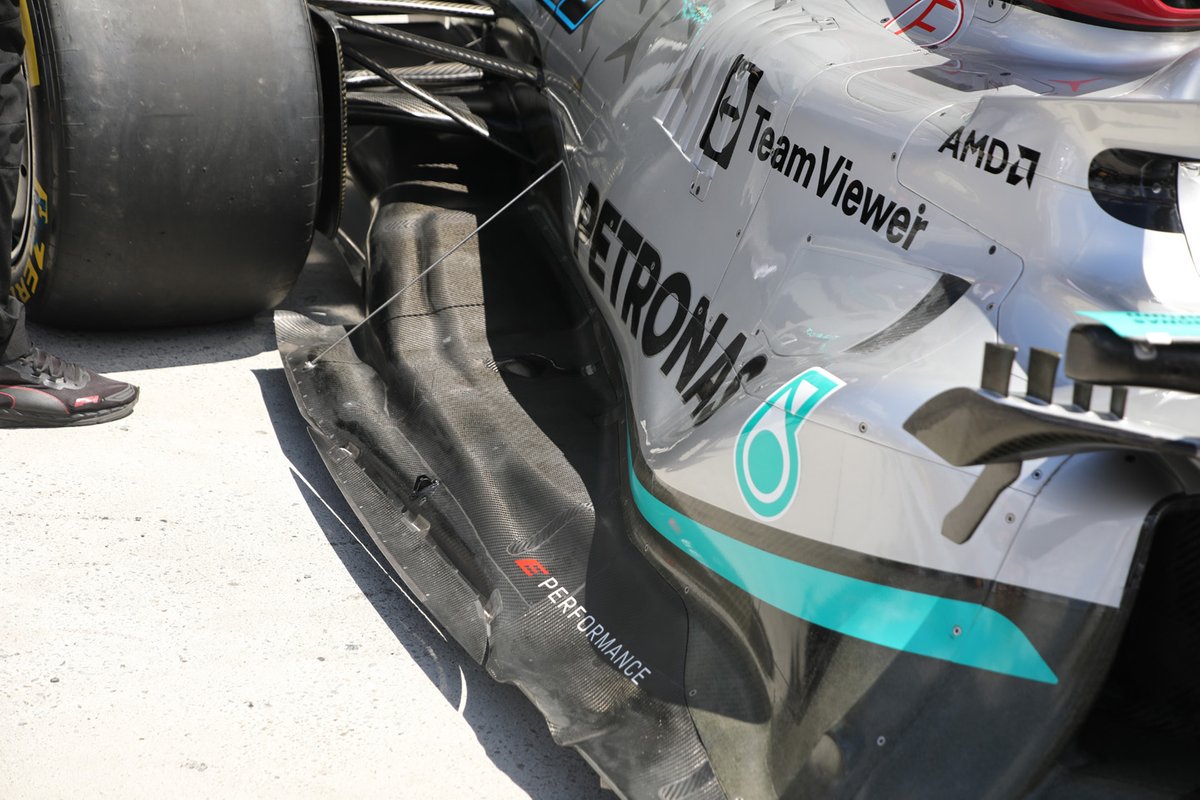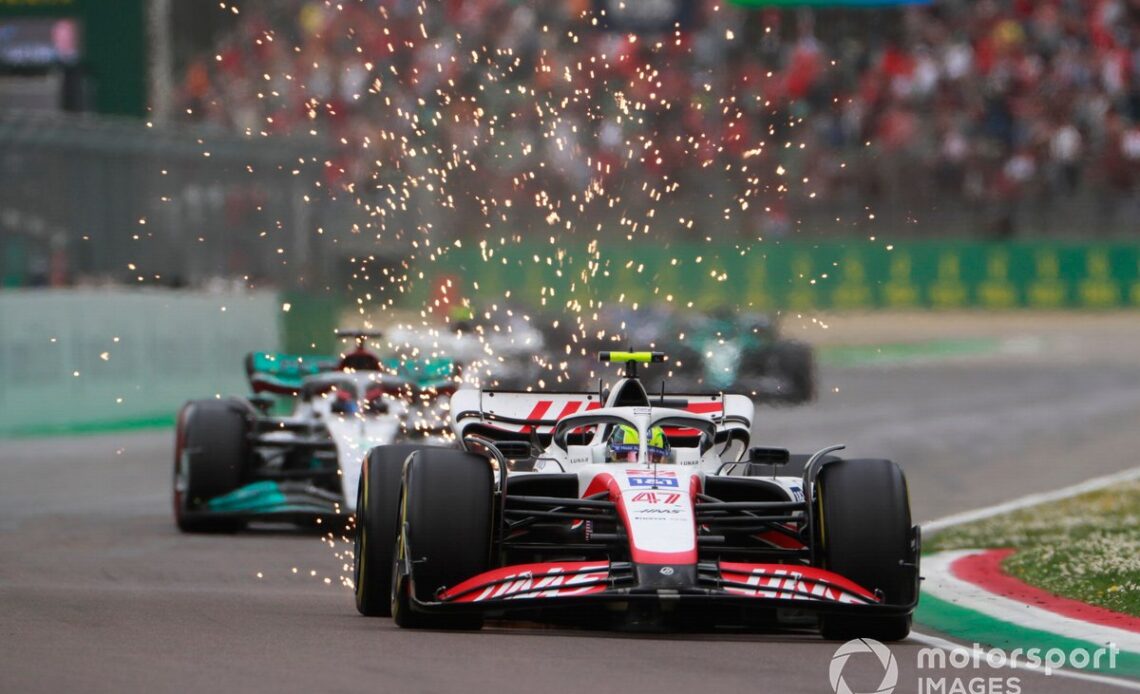In the wake of an especially brutal Baku race for a number of drivers – with Lewis Hamilton’s back pain highlighting the battering some are facing right now – intervention by the FIA in trying to eradicate the problem has added a fresh dimension to the debate.
In a technical directive sent on Thursday to teams by the FIA’s single-seater technical director Nikolas Tombazis, the governing body laid out how it plans to attack the matter in a bid to try to help drivers.
And although F1’s TD are never officially published, here is how the FIA explained its plan to teams for both the immediate, short and long-term future.
Mick Schumacher, Haas VF-22, George Russell, Mercedes W13, as sparks fly
Photo by: Steven Tee / Motorsport Images
IMMEDIATE CAR CHANGES
One of the main difficulties teams have faced in curing porpoising has been trying to maintain a stable aero platform as downforce levels increase on the straights.
Matters have been complicated by some teams suffering from the floor edges flexing down as speeds go up – which leads to an increase in downforce levels.
This in theory sounds great, but the reality is that the increased downforce accelerates the extent to which the car is pushed down on to the track, so therefore makes the porpoising worse.
It was this issue that prompted the pre-season decision to allow teams to run a single floor stay to help strengthen the edges and limit the flexing.
From the Canadian Grand Prix, the FIA will allow two further measures to help teams make their floors stronger. They will be allowed an additional stay mounted further forwards of the one already adopted – which is something that Mercedes has introduced already.

Mercedes W13 floor detail
Photo by: Giorgio Piola
Furthermore, teams will be allowed an additional thickness on the floor’s top surface – even if this breaks local regulations on curvature or if it protrudes beyond the volumes defined in the regulations.
If these changes do deliver a tangible benefit in helping address the porpoising, then the FIA will then propose a formal rule change that can be voted on by teams for approval by the World Motor Sport Council.
Bouncing metric
One of the things that the FIA wants to gather over the Canadian Grand Prix is whether a car can be determined to exhibit ‘excessive vertical accelerations’ as it bounces.
This will be analysed first through both closer inspection of the patterns of plank and skid wear on cars – as well as the ways…
Click Here to Read the Full Original Article at Motorsport.com – Formula 1 – Stories…

